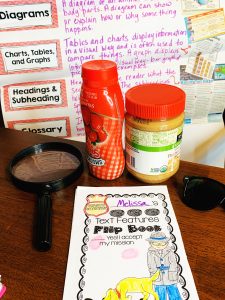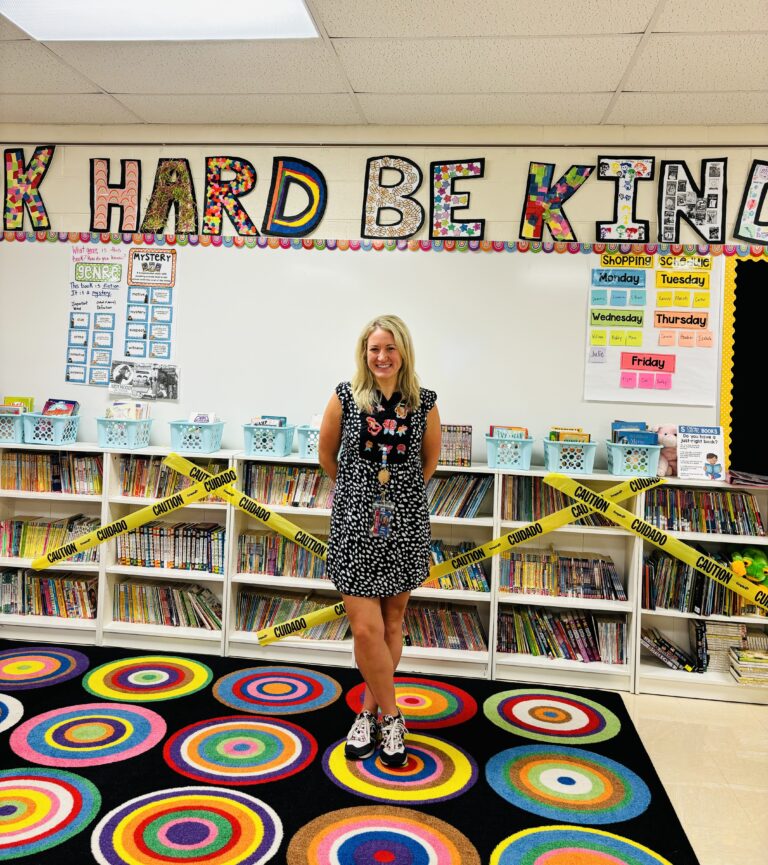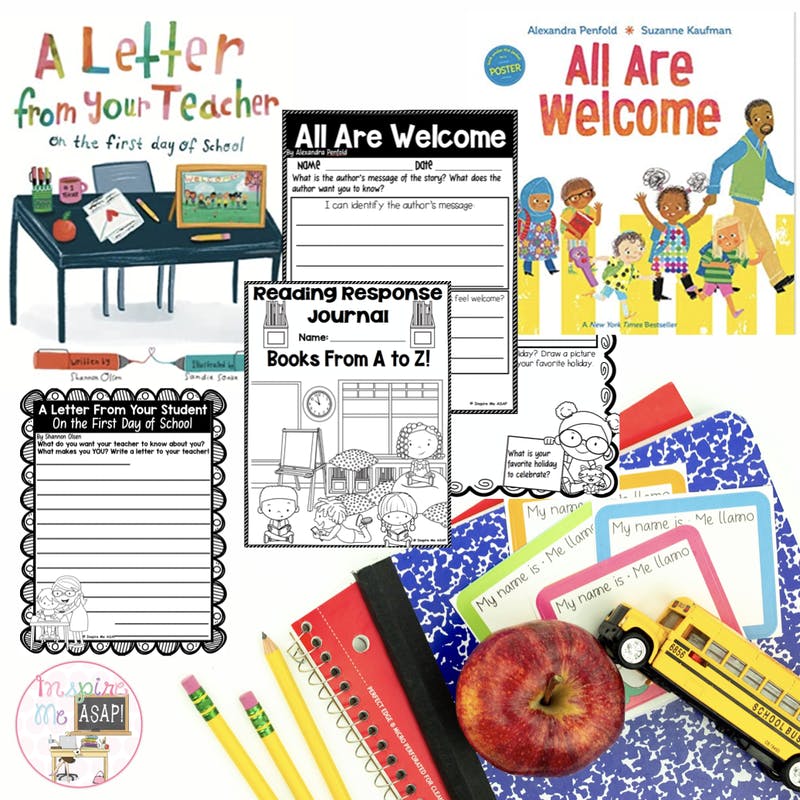Teaching nonfiction text features can be a fun and engaging way to teach your students how to read informational text! Get ready to grab a jar of jelly and a container of peanut butter for this important reading lesson! Students will learn how photographs and captions go together like peanut butter and jelly. In this video, I share with you a fun and engaging way to teach your students about this important non-fiction text feature!
Did you miss my first video, where I introduced how I teach my non-fiction unit to my second graders? I love to use a detective theme to teach my students all about the different text features they encounter as they read non-fiction texts! I share with you how I teach different mini-lessons (missions!) that each text detective must investigate, in order to earn their official VIP text detective badge, from the Chief of Detectives….that’s YOU! ( Click here for the one: Introducing NF Text Features! )
Click to watch my video on YouTube here: Teaching NF Text Features- Photographs and Captions
Interested in the ideas and lesson plans you see in the video?
Click here to purchase: Non-Fiction Text Features
Teaching About Non-Fiction Text Features: Photographs and Captions Video Script
[00:00:00] Hi, everyone, my name is Melissa from Inspire Me A.S.A.P. Then in today’s video, I want to share with you how I teach my students all about the nonfiction text features of photographs and captions and how they go together like peanut butter and jelly. Now, if you watched my previous video, you’ll know that I kicked off every non-fiction mini-lesson and I call them missions. You know that I kick off each mission by playing the theme song of Mission Impossible for through the entirety. But for this video, I’m just going to play for a few seconds. My students know that when they hear that music, they have three minutes and 27 seconds to make sure that they are getting prepared and organized, they have everything that they need in order for in order to be ready for me to teach them that mission or that mini-lesson for that day. And remember, that mission or the mini-lesson is just one of the non-fiction text features. So they are bringing to the carpet when that theme song is playing. They have three minutes. They are bringing their Mission Impossible top-secret envelope. They are pulling out their text feature flipbook. They are going to flip to the page, a photograph and captions so that they are all ready to learn when the music is playing. I am making sure that I am ready. So on the smartboard, I have very clearly a display of the text that shows the text feature that we’re learning about for that day, along with the definition of what those text features mean. Or the purpose of them. So for today’s video, I actioned for the actual mini-lesson that I teach my students. I actually do explain how the photographs and captions go together like peanut butter and jelly.
[00:02:10] They are not one without the other.

[00:02:12] You can’t have one without the other. One helps you identify what the other is. So I teach my students these at the same time on the same day. And I have this very clearly displayed on the SmartBoard and that’s one of the things that I do to make sure that I’m ready to go. As that music is playing, once my students are all organized and I have my anchor chart ready and I have my learning target clearly posted on the smart board along with the text feature and the definition, then I’m ready to explicitly demonstrate and model what it looks like to find evidence of a photograph and caption inside of the nonfiction books that I’m reading. So the students are not writing or doing anything other than looking and listening with their full body. At this time, this is my explicit part of the teaching for the mini-lesson.
[00:03:09] I would use any nonfiction book as an example and I would say, boys and girls. As I was reading this book today, I noticed that this book was filled with a lot of beautiful photographs.
[00:03:22] This is showing me what the animal looks like in real life.
[00:03:28] And I’m also noticing that I see a caption that is right by the photograph.
[00:03:37] If I read this yellow caption right by the photograph, I am going to learn more information about what that photograph is trying to teach me.
[00:03:50] I would then read aloud those captions to my students. I would turn to another page, give another clear, explicit example of this is a photograph.
[00:04:00] Boys and girls. The caption is teaching me babies hatch from their eggs.
[00:04:06] I might pull up another non-fiction book and see boys and girls in this book.
[00:04:12] Different books. Still teaching me facts. Nonfiction. The captions might look a little bit different. Notice how they’re not in yellow. These are in blue with white font, but it’s still they still go together hand in hand like peanut butter and jelly. And it’s also teaching me the caption is teaching me more about that photograph.
[00:04:32] Once I have it’s about 10 minutes long for that mini-lesson explicitly demonstrated what those photographs and captions looked like. My students are then ready to independently apply what I taught in their work time and their work. Time might be a guided reading group with me and independent reading time at their desk. It just depends on what their rotation is for that time, for that day. So for example, if they were independently reading at their desks, they would go to their book Nook, take out a non-fiction book. And for this unit, I make sure that I go to my local library and check out about 40 different nonfiction books at all levels. And then that way my students are never going to say I don’t have a nonfiction book. Oh, yes, you do. Go to the classroom library. I have a ton of them for you. They choose one of those non-fiction books. They flip open in their text future flipbook to the page that is the photographic and captions.
[00:05:33] They write down what the definition of the photographs are. And again, I either have that on my anchor chart or on the SmartBoard visibly posted to them and then I spy with my detect.
[00:05:44] Devi, an example of this text feature, they write the title of the text, the author, the page number, citing that evidence always, always, always, and then showing and writing down what the photograph and the caption was in their own books to apply what was taught independently. Now, for students who might need some more support with this, one thing that you can do is you can call them over in a guided reading group.
[00:06:12] And one thing that I like to do with my readers to keep them engaged and to keep them motivated throughout the unit is I like to use it with them.
[00:06:21] I spy with my detective.
[00:06:23] My non-fiction text features fun little Post-it flag notes. So as we are reading whatever it is together, whatever guided reading book that we’re reading together, sometimes it’s a picture book and then sometimes it’s actual guided reading passages.
[00:06:42] I might tell them, boys and girls, I want you to use those sticky notes. Take off those sticky notes and show me that you can identify examples of.
[00:06:53] Photographs and captions just like I taught you. And so we would be doing this together instead of having them independently do that.
[00:07:02] So another example might be in a hard copy of an article and maybe not using the Post-it sticky notes, but maybe they’re just using highlighters.
[00:07:15] My students love, love, love to use highlighters to highlight evidence and so they can highlight the different examples of the photograph and the captions and then write down in their flipbook what the definition of those two text features are.
[00:07:35] And then again, the title, an example of where they found that evidence. I sure hope that you’ve got some ideas of how you can teach this text feature with your own students. Please be sure to follow me for my next video where I go with our over another mission that I teach to my students. In the meantime, if you are looking for any more information about the resources that I prevented presented in this video, I will post more information on and links to where you can find some of that. Some of these resources in the product description below this video. Thank you so much.








